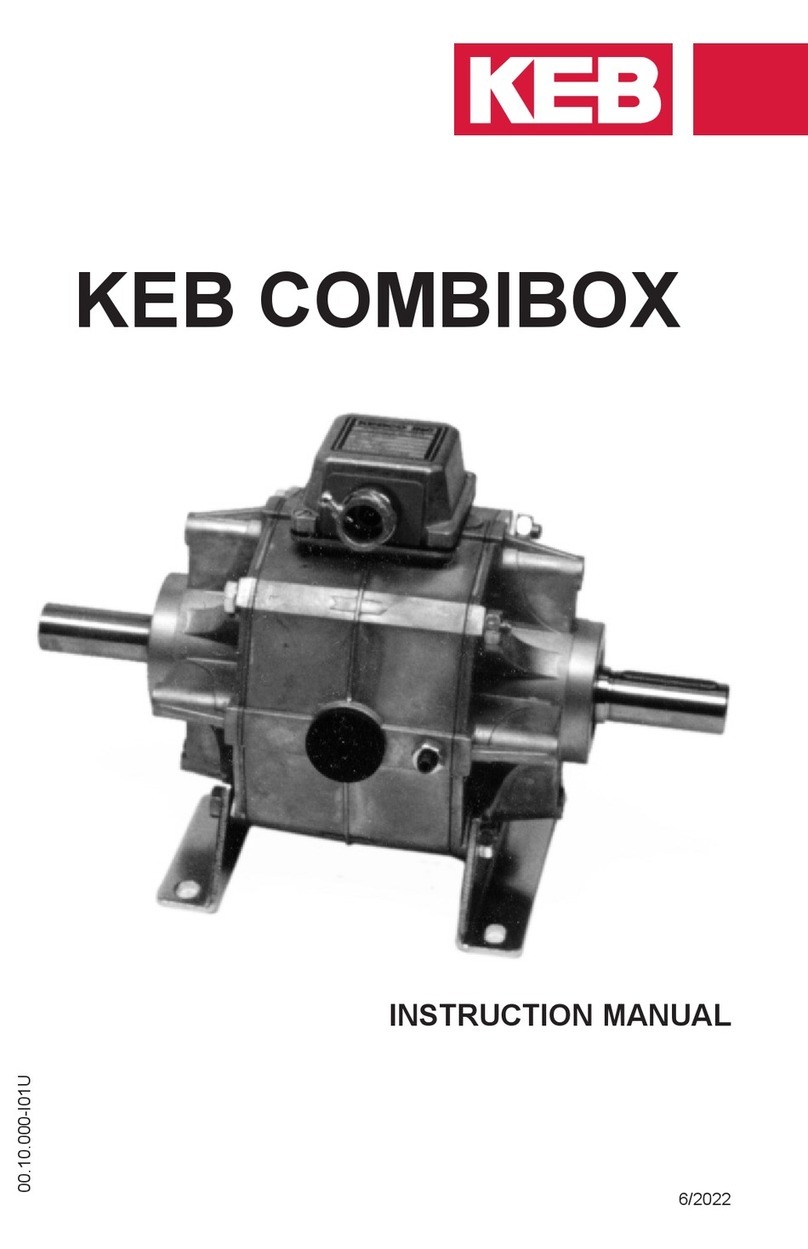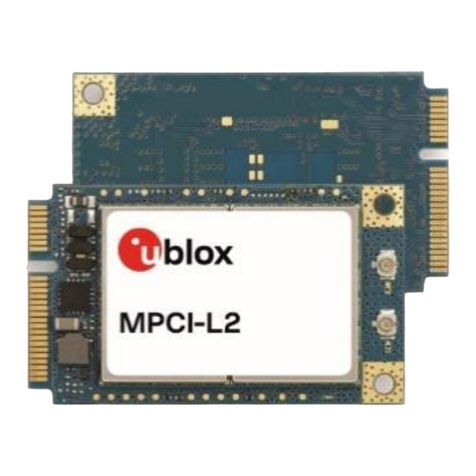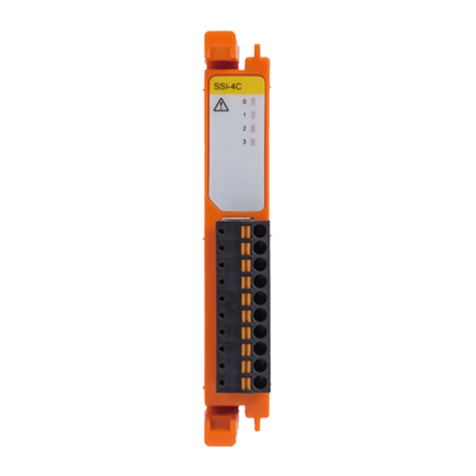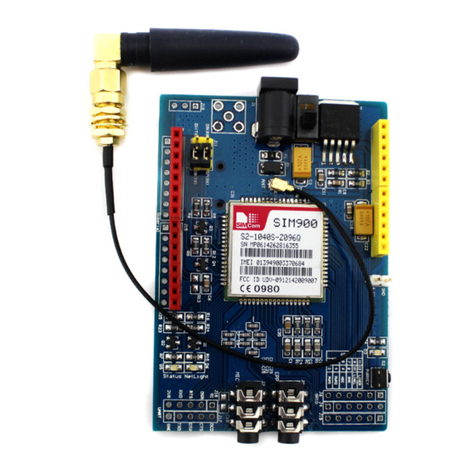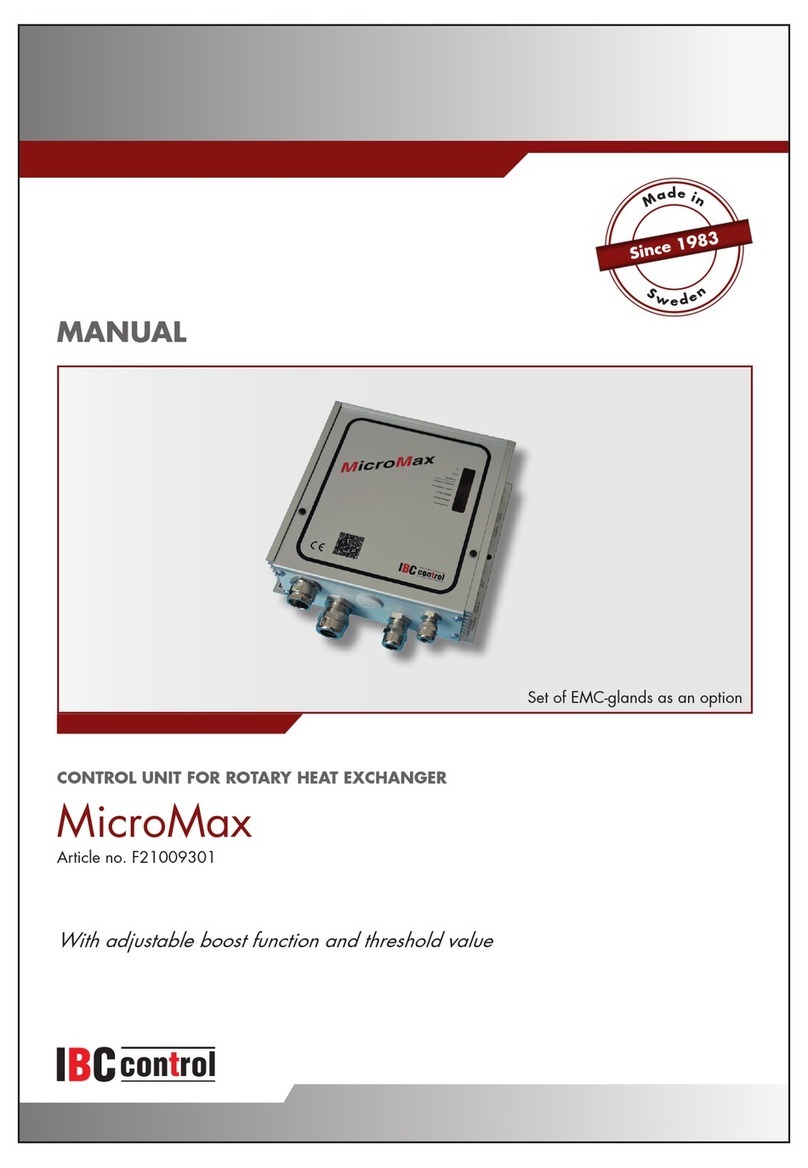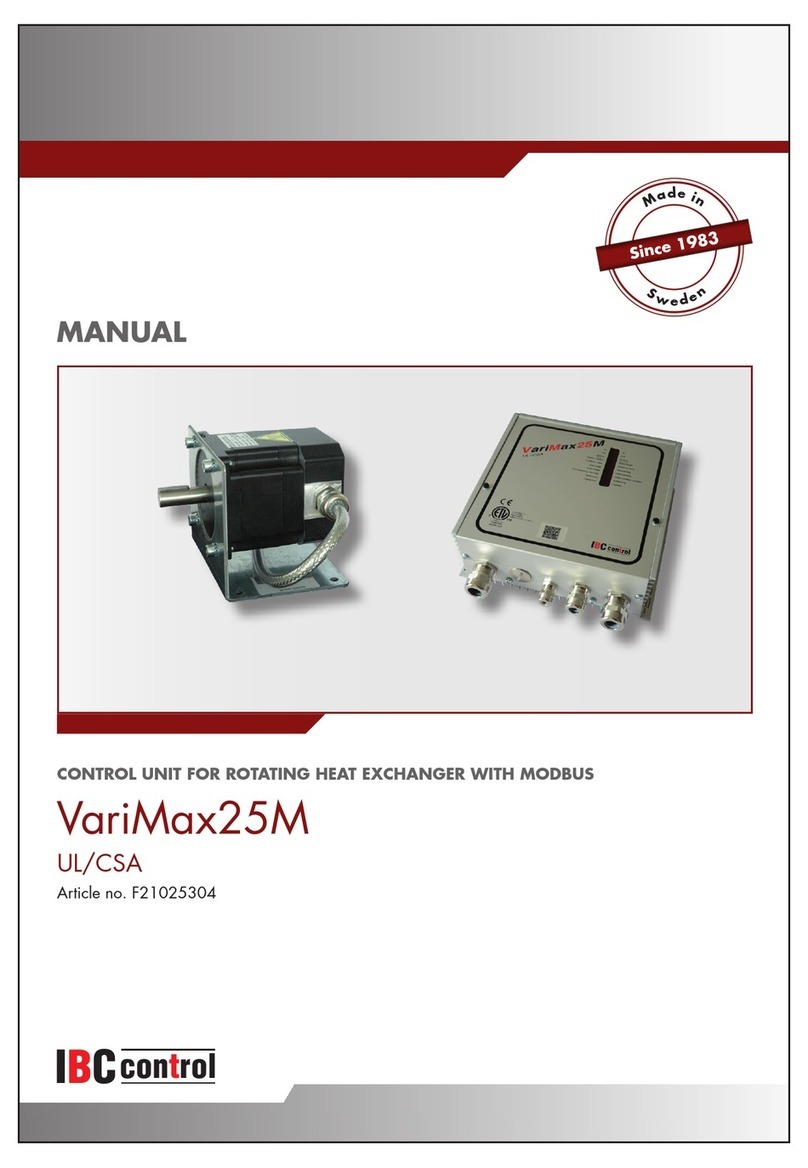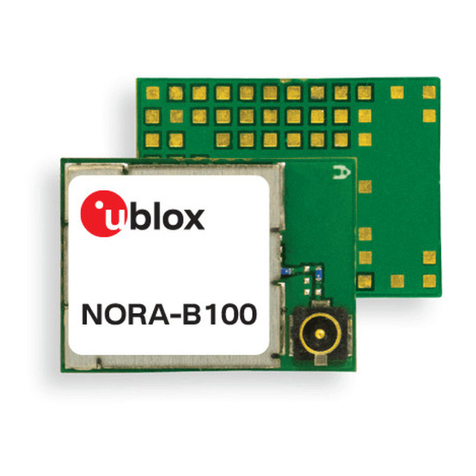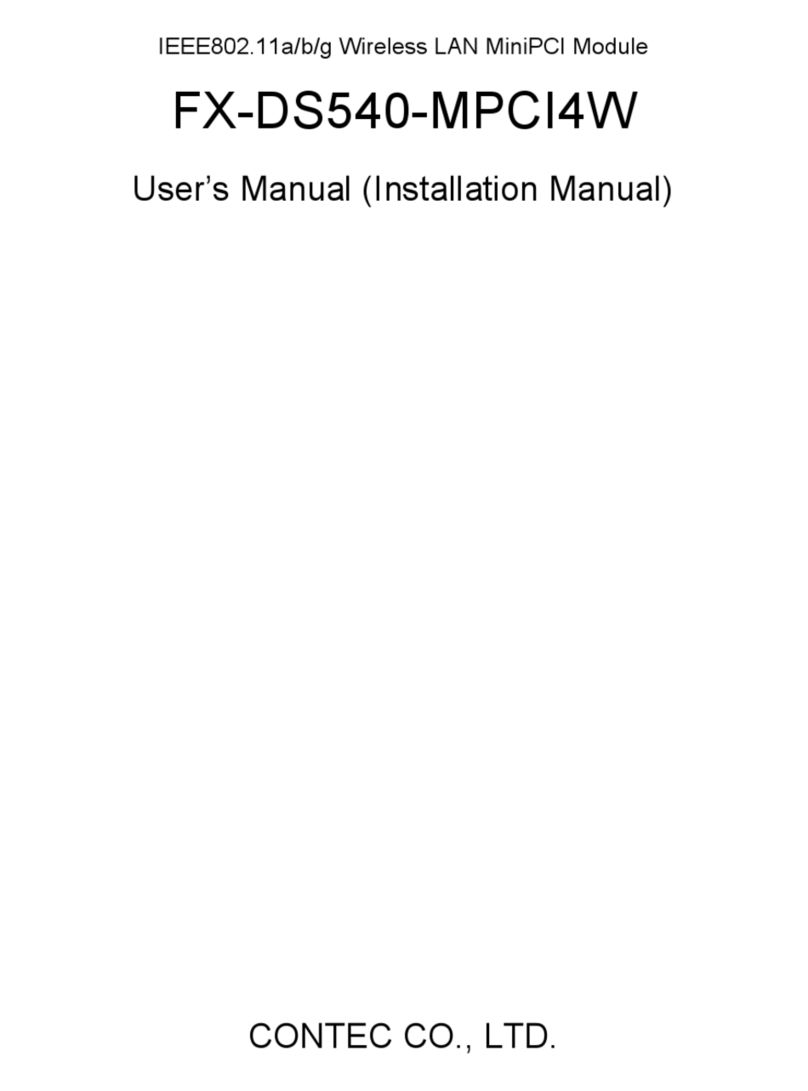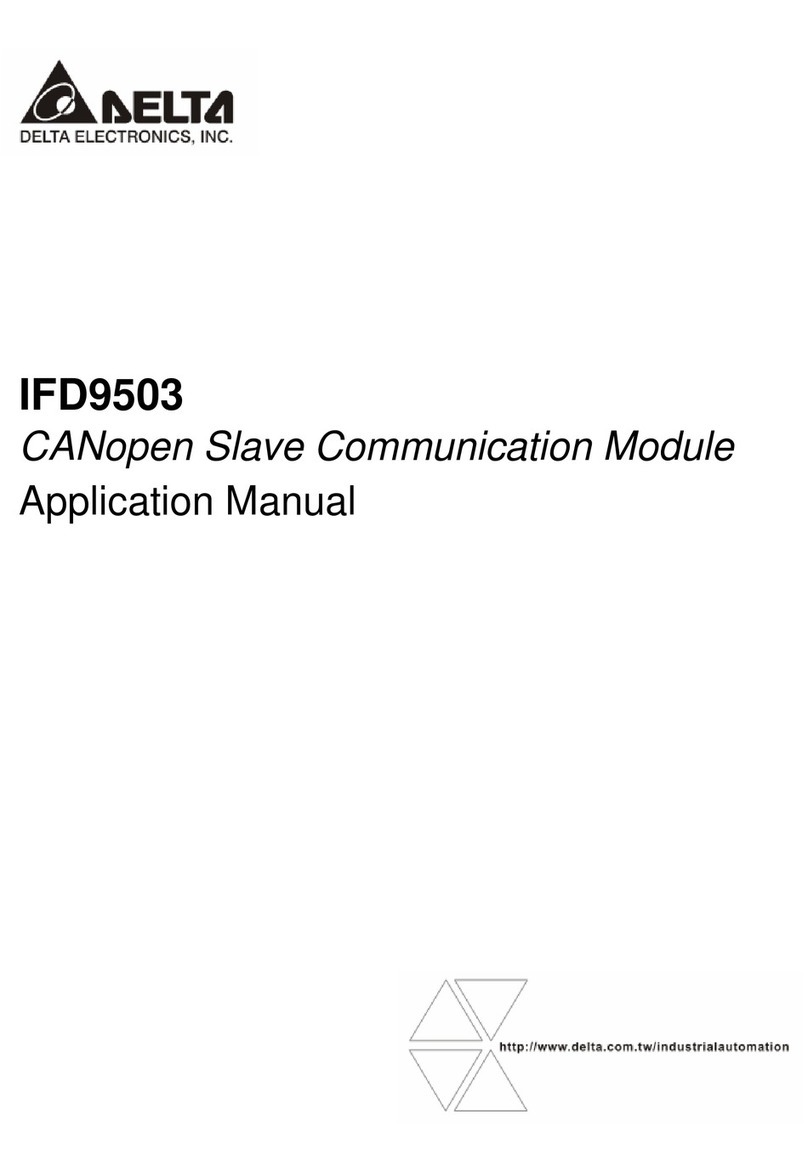Creotech KLMKBM-01 User manual

Version update instructions
No.
Date
Content
Version
1
2021-05-08
New document
V1.0.0
2
3

Catalogue
1 Product description................................................................................................................. 4
2 Performance characteristics................................................................................................. 4
2.1 main feature................................................................................................................... 4
3 Module interface....................................................................................................................... 4
3.1 Size package................................................................................................................... 4
3.2 Pin definition............................................................................................................... 5
4 Electrical parameters............................................................................................................. 6
4.1 Absolute electrical parameters............................................................................... 6
4.2 Working conditions....................................................................................................... 6
4.3 Power consumption in working mode......................................................................... 7
5 RF parameters............................................................................................................................. 7
5.1 Basic RF characteristics........................................................................................... 7
5.2 RF output power............................................................................................................. 7
5.3 RF receiving sensitivity........................................................................................... 7
6 Module basic instructions..................................................................................................... 8
Appendix statement..................................................................................................................... 11

1 Product description
The Bluetooth module uses Telink’s TLSR8258 Bluetooth chip, which is a Bluetooth
mesh ad hoc network module specially designed based on BLE V5.0 protocol ,it supports
the Sig Mesh V1.0 standard. Customers only need to connect the module to the
application product and turn on the power to link with mobile phone equipment,
digital product equipment and PDA equipment to realize remote control of the mesh
network. It can also facilitate the realization of intra-network broadcast or
arbitrary fixed-point data transmission support. It is very suitable for IoT
information collection, large-scale networking and communication scenarios, smart
home and other applications.
2 Performance characteristics
2.1 main feature
(1) Default broadcast status: It Memorizes networking information, and
automatically access the network after power-on.
(2) Broadcast cycle, adjustable connection interval: The key parameters of the
module can be configured freely, and the efficiency and power consumption can be
independently balanced.
(3) Low-power standby: Using Bluetooth BLE-5.0 technology, 0.1uA in sleep mode.
(4) RF power consumption: TLSR8258: Rx: 6.3mA, TX:0Db 4.8mA/10dbm 23mA, lower
power consumption.
(5) Power-off save: Avoid repeating settings each time power-on.
(6) Scope of application: Smart LED, smart home, smart low-power sensor. Can be
seamlessly connected with Bluetooth laptops, computers plus Bluetooth adapters,
PDAs and other devices
3 Module interface
3.1 Size package
The KLMKBM-01 Bluetooth module has 2 rows of pins, with a pitch of 2mm.
KLMKBM-01 Bluetooth module size: 16 ±0.35 mm (W) ×24 ±0.35mm (L) ×2.8 ±
0.15mm(H), and the PCB thickness is 0.8mm±0.1 mm.The package is shown in Figure
3.1

Figure 3.1 Schematic diagram of KLMKBM-01 Bluetooth module
3.2 Pin definition
The interface pin definition is shown in Table 3.2:
Table 3.2 KLMKBM-01 Bluetooth module interface pinout description
No.
Symbol
IO
Types
Features
1
RST
I/O
Hardware reset pin (active low), corresponding to
RESETB of IC.
2
ADC
AI
ADC port, 12bits ADC, corresponding to TL_B1 of the IC
3
PD7
I/O
GPIO port, corresponding to TL_D7 of IC
4
PA1
I/O
GPIO port, corresponding to TL_A1 of IC
5
B
I/O
GPIO port, can be used as LED drive PWM output, default
corresponding to blue light
6
G
I/O
GPIO port, can be used as LED drive PWM output, default
corresponding to green light
7
WW
I/O
GPIO port, can be used as LED driver PWM output, default
corresponding to warm white light
8
3V3
P
Module Power pin (3.3V)
9
GND
P
Ground reference
10
PB4
I/O
GPIO port, corresponding to TL_B4 of IC
11
SWS
I
The programming pin of the module corresponds to TL_D4
of the IC.
12
PB6
I/O
GPIO port, corresponding to TL_B6 of IC

13
R
I/O
GPIO port, can be used as LED drive PWM output, default
corresponding to red light
14
CW
I/O
GPIO port, can be used as LED driver PWM output, default
corresponding to cold white light
15
RX
I/O
Serial port receiving pin UART RX
16
TX
I/O
Serial port sending pin UART TX
Note: P stands for power supply pin, I/O stands for input and output pin, AI
stands for analog input. If you have your own requirements for the light color
controlled by the PWM output, please contact us.
4 Electrical parameters
4.1 Absolute electrical parameters
Table 4.1 Absolute parameters
Parameter
Description
Min
Max
Unit
Ts
Storage
temperature
-65
150
℃
VCC
Supply
voltage
-0.3
3.9
V
Electrostatic discharge
voltage (human body
model)
TAMB-25℃
-
2
KV
Electrostatic discharge
voltage (machine model)
TAMB-25℃
-
0.5
KV
4.2 Working conditions
Table 4.2 Normal working conditions
Parameter
Description
Min
Typical
Max
Unit
Ta
Operating
temperature
-40
-
85
℃
VCC
Operating Voltage
2.8
3.3
3.6
V
V
IL
IO low level input
VSS
-
VCC*0.3
V
V
IH
IO high level
input
VCC*0.7
-
VCC
V
V
OL
IO low level
output
VSS
-
VCC*0.1
V
VoH
IO high level
output
VCC*0.9
-
VCC
V

4.3 Power consumption in working mode
Table 4.3 Power consumption during TX continuous transmission
Symbol
Condition
Typical
Unit
I
tx
Continuous transmission,
10.5dBm output power
23
mA
I
rx
Continuous reception
6.3
mA
I
DC
In Mesh network working state
7
mA
Ideepsleep1
Deep sleep mode (reserved
16KBRAM)
1.2
uA
Ideepsleep2
Deep sleep mode (no RAM
reserved)
0.4
uA
5 RF parameters
5.1 Basic RF characteristics
Table 5.1 Basic RF characteristics
Parameter
Description
Working
frequency
2.4GHzISM band
Wireless
standard
BLE 5.0
Data transfer
rate
1Mbps,2Mbps
Antenna type
On board PCB antenna
5.2 RF output power
Table 5.2 TX power during continuous transmission
Parameter
Min
Typical
Max
Unit
RF average output power
-22
10
10.5
dBm
20dB modulation signal
bandwidth (1M)
-
2500
-
KHz
20dB modulation signal
bandwidth (2M)
-
1400
-
KHz
5.3 RF receiving sensitivity

Table 5.3 RX sensitivity
Parameter
Min
Typical
Max
Unit
RX
sensitivity
1Mbps
-
-94.5
-
dBm
2Mbps
-
-91
-
Frequency offset error
1Mbps
-250
-
+300
KHz
2Mbps
-300
-
+200
Co-channel interference
suppression
-
-
-10
-
dB
6 Module basic instructions
KLMKBM-01 module recommends that users can access the network through the
APP-"zhihui connect" developed by our company configuration.
Two bulbs are needed for control, and our module needs to be soldered to the
corresponding lamp board. If the bulb is pre-configured, you need to perform 5 short
power cycles (on/off every 2 seconds) to reset the bulb.
6.1 Add equipment
Click "Add Device" in the upper right corner to select the device you need
to add or enter the device name directly, such as RGBCW-BLE.
The initial device has entered the distribution network mode as soon as the
power is turned on, and then the lights start to flash; if it is a secondary
distribution network, follow the instructions of the distribution network
diagram, and then click the "start adding device" button.
Search the device, select the corresponding device to ad.
After the connection is complete, click "Finish" --device rename--choose
a family/room--connection succeeded;

6.2 Group control
Enter the created group to control the devices assigned to the group at the
same time.
6.3 Single light control
After the added device enters the device control page, you can perform other
operation controls such as switching/dimming of a single light.
6.4 Other settings
Timing/countdown can be set, device OTA and bulb can be deleted from the network.


Appendix statement
Federal Communications Commission (FCC) Declaration of Conformity
This device complies with part 15 of the FCC Rules.
Operation is subject to the following two conditions: (1) this device may not
cause harmful interference, and (2) this device must accept any interference
received, including interference that may cause undesired operation.
NOTE: This equipment has been tested and found to comply with the limits for
a Class B digital device, pursuant to Part 15 of the FCC Rules.
These limits are designed to provide reasonable protection against harmful
interference in a residential installation. This equipment generates, uses and
can radiate radio frequency energy and, if not installed and used in accordance
with the instructions, may cause harmful interference to radio communications.
However, there is no guarantee that interference will not occur in a particular
installation. If this equipment does cause harmful interference to radio or
television reception, which can be determined by turning the equipment off and
on, the user is encouraged to try to correct the interference by one or more
of the following measures:
-- Reorient or relocate the receiving antenna.
-- Increase the separation between the equipment and receiver.
-- Connect the equipment into an outlet on a circuit different
from that to which the receiver is connected.
-- Consult the dealer or an experienced radio/TV technician for help.
FCC ID: 2AZTV-KLMKBM-01
Warning: Changes or modifications to this unit not expressly approved by
the part responsible for compliance could void the user’s authority to
operate the equipment

Federal Communication Commission Statement (FCC, U.S.)
This equipment has been tested and found to comply with the limits for a Class B digital
device, pursuant to Part 15 of the FCC Rules. These limits are designed to provide
reasonable protection against harmful interference in a residential installation. This
equipment generates, uses and can radiate radio frequency energy and, if not installed and
used in accordance with the instructions, may cause harmful interference to radio
communications. However, there is no guarantee that interference will not occur in a
particular installation. If this equipment does cause harmful interference to radio or
television reception, which can be determined by turning the equipment off and on, the user
is encouraged to try to correct the interference by one of the following measures:
-
Reorient or relocate the receiving antenna.
-
Increase the separation between the equipment and receiver.
-
Connect the equipment into an outlet on a circuit different from that to which the
receiver is connected.
-
Consult the dealer or an experienced radio/TV technician for help.
This device complies with Part 15 of the FCC Rules. Operation is subject to the following two
conditions: (1) This device may not cause harmful interference, and (2) this device must
accept any interference received, including interference that may cause undesired operation.
FCC Caution:
Any changes or modifications not expressly approved by the party responsible for
compliance could void the user's authority to operate this equipment.
IMPORTANT NOTES
Co-location warning:
This transmitter must not be co-located or operating in conjunction with any other
antenna or transmitter.
OEM integration instructions:
This device is intended only for OEM integrators under the following conditions:
The transmitter module may not be co-located with any other transmitter or antenna. The
module shall be only used with the external antenna(s) that has been originally tested and
certified with this module.
As long as the conditions above are met, further transmitter test will not be required.
However, the OEM integrator is still responsible for testing their end-product for any
additional compliance requirements required with this module installed (for example,
digital device emissions, PC peripheral requirements, etc.).
Validity of using the module certification:
In the event that these conditions cannot be met (for example certain laptop configurations or
co-location with another transmitter), then the FCC authorization for this module in
combination with the host equipment is no longer considered valid and the FCC ID of the
module cannot be used on the final product. In these circumstances, the OEM integrator will
be responsible for re-evaluating the end product (including the transmitter) and obtaining a
separate FCC authorization.
End product labeling:
The final end product must be labeled in a visible area with the following: “Contains
Transmitter Module FCC ID: 2AZTV-KLMKBM-01”.

Information that must be placed in the end user manual:
The OEM integrator has to be aware not to provide information to the end user regarding
how to install or remove this RF module in the user's manual of the end product which
integrates this module. The end user manual shall include all required regulatory
information/warning as show in this manual.

Integration instructions for host product manufacturers according to KDB 996369 D03 OEM
Manual v01
2.2
List of applicable FCC rules
FCC Part 15 Subpart C 15.247 & 15.207 & 15.209
2.3
Specific operational use conditions
The module is a Bluetooth module with BLE 2.4G function.
Operation Frequency: 2402~2480MHz
Number of Channel: 40
Modulation: GFSK
Type: PCBAntenna
Gain: 2dBi
The module can be used for mobile or applications with a maximum 2dBi antenna. The host
manufacturer installing this module into their product must ensure that the final composit product
complies with the FCC requirements by a technical assessment or evaluation to the FCC rules,
including the transmitter operaition. The host manufacturer has to be aware not to provide information
to the end user regarding how to install or remove this RF module in the user's manual of the end
product which integrates this module. The end user manual shall include all required regulatory
information/warning as show in this manual.
2.4
Limited module procedures
Applicable. The module is a Limited module and complies with the requirement of FCC Part 15.212.
2.5
Trace antenna designs
Not applicable. The module has its own antenna, and doesn’t need a host’s printed board
microstrip trace antenna etc.
2.6
RF exposure considerations
The module must be installed in the host equipment such that at least 20cm is maintained between the
antenna and users’ body; and if RF exposure statement or module layout is changed, then the host
product manufacturer required to take responsibility of the module through a change in FCC ID or new
application. The FCC ID of the module cannot be used on the final product. In these circumstances,
the host manufacturer will be responsible for re-evaluating the end product (including the transmitter)
and obtaining a separate FCC authorization
2.7
Antennas
Antenna Specification are as follows:
Type: PCBAntenna
Gain: 2dBi
This device is intended only for host manufacturers under the following conditions:
The transmitter module may not be co-located with any other transmitter or antenna;
The module shall be only used with the internal antenna(s) that has been originally tested and certified
with this module. The antenna must be either permanently attached or employ a ‘unique’ antenna
coupler.
As long as the conditions above are met, further transmitter test will not be required. However, the
host manufacturer is still responsible for testing their end-product for any additional compliance
requirements required with this module installed (for example, digital device emissions, PC peripheral
requirements, etc.).
2.8
Label and compliance information
Host product manufacturers need to provide a physical or e-label stating “Contains FCC ID: 2AZTV-
KLMKBM-01”with their finished product.

2.9
Information on test modes and additional testing requirements
Operation Frequency: 2402~2480MHz
Number of Channel: 40
Modulation: GFSK
Host manufacturer must perfom test of radiated & conducted emission and spurious emission, etc
according to the actual test modes for a stand-alone modular transmitter in a host, as well as for
multiple simultaneously transmitting modules or other transmitters in a host product.
Only when all the test results of test modes comply with FCC requirements, then the end product can
be sold legally.
2.10
Additional testing, Part 15 Subpart B disclaimer
The modular transmitter is only FCC authorized for FCC Part 15 Subpart C 15.247 & 15.207 & 15.209
and that the host product manufacturer is responsible for compliance to any other FCC rules that apply
to the host not covered by the modular transmitter grant of certification. If the grantee markets their
product as being Part 15 Subpart B compliant (when it also contains unintentional-radiator digital
circuity), then the grantee shall provide a notice stating that the final host product still requires Part 15
Subpart B compliance testing with the modular transmitter installed.

FCC STATEMENT :
This device complies with Part 15 of the FCC Rules. Operation is subject to the following two
conditions:
(1) This device may not cause harmful interference, and
(2) This device must accept any interference received, including interference that may
cause undesired operation.
Warning: Changes or modifications not expressly approved by the party responsible for
compliance could void the user's authority to operate the equipment.
NOTE: This equipment has been tested and found to comply with the limits for a Class B
digital device, pursuant to Part 15 of the FCC Rules. These limits are designed to provide
reasonable protection against harmful interference in a residential installation. This equipment
generates uses and can radiate radio frequency energy and, if not installed and used in
accordance with the instructions, may cause harmful interference to radio communications.
However, there is no guarantee that interference will not occur in a particular installation. If
this equipment does cause harmful interference to radio or television reception, which can be
determined by turning the equipment off and on, the user is encouraged to try to correct the
interference by one or more of the following measures:
Reorient or relocate the receiving antenna.
Increase the separation between the equipment and receiver.
Connect the equipment into an outlet on a circuit different from that to which the
receiver is connected.
Consult the dealer or an experienced radio/TV technician for help.
FCC Radiation Exposure Statement:
This equipment complies with FCC radiation exposure limits set forth for an
uncontrolled environment. This equipment should be installed and operated
with minimum distance 20cm between the radiator & your body.

Labels
Host Device must contain the following label on the outside of the unit:
Contains FCC ID:2AZTV-KLMKBM-01
Installation Guidance
The final host / module combination may also need to be evaluated against the FCC Part 15B criteria for
unintentional radiators in order to be properly authorized for operation as a Part 15 digital device.
The user’s manual or instruction manual for an intentional or unintentional radiator shall caution the user
that changes or modifications not expressly approved by the party responsible for compliance could void the
user's authority to operate the equipment. In cases where the manual is provided only in a form other than
paper, such as on a computer disk or over the Internet, the information required by this section may be
included in the manual in that alternative form, provided the user can reasonably be expected to have the
capability to access information in that form.
To ensure compliance with all non-transmitter functions the host manufacturer is responsible for ensuring
compliance with the module( s) installed and fully oper ational. For example, if a host was previously authorized
as an unintentional radiator under the Declaration of Conformity procedure without a transmitter certified
module and a module is added, the host manufacturer is responsible for ensuring that the after the module
is installed and operational the host continues to be compliant with the Part 15B unintentional radiator
requirements.
Table of contents
Popular Control Unit manuals by other brands

smart home
smart home MMV-100 User instruction
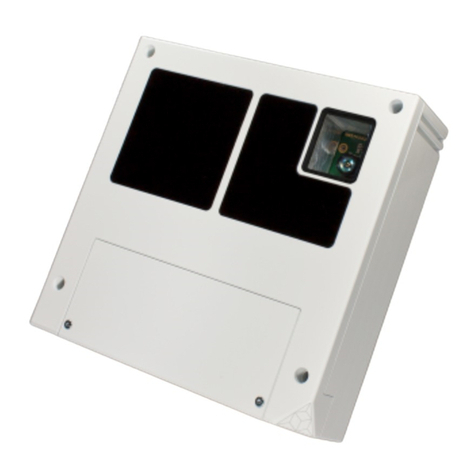
Blue Technix
Blue Technix Argos3D-P320 Hardware user manual
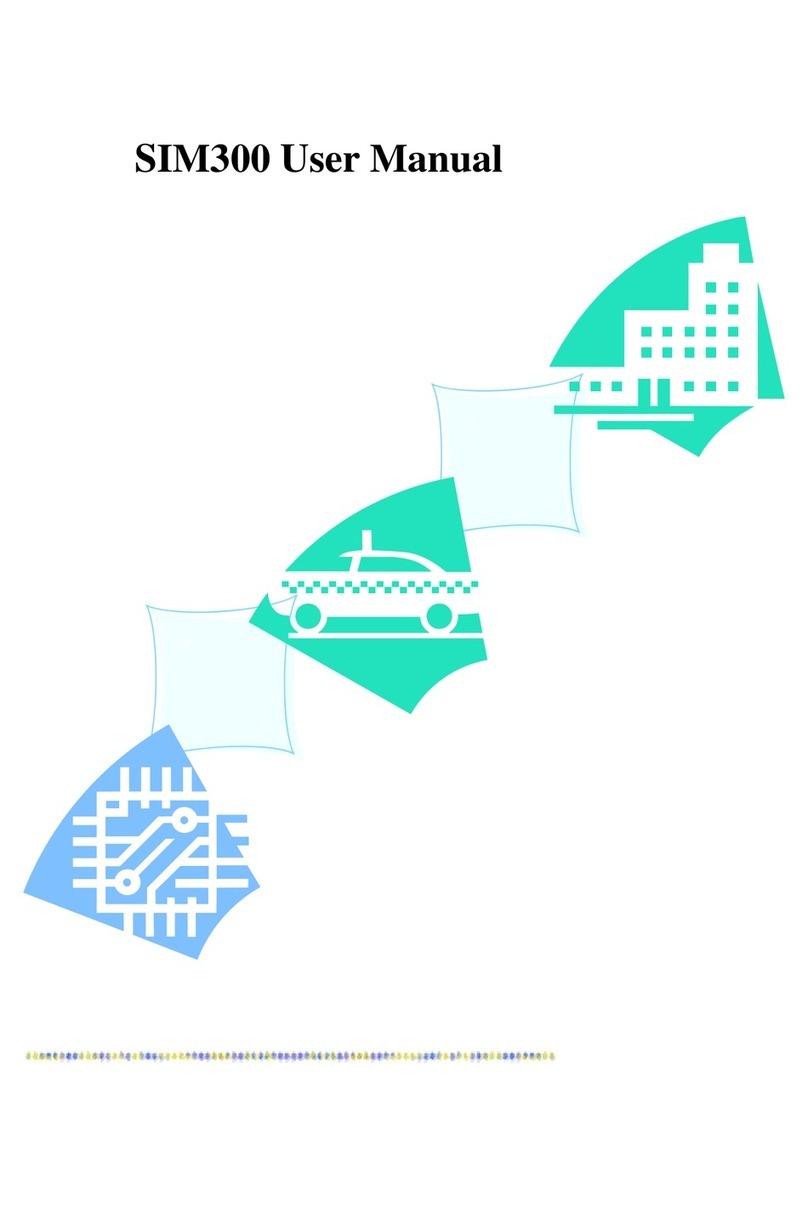
SimCom
SimCom SIM300 user manual

Blu Stream
Blu Stream ACM500 Quick reference guide
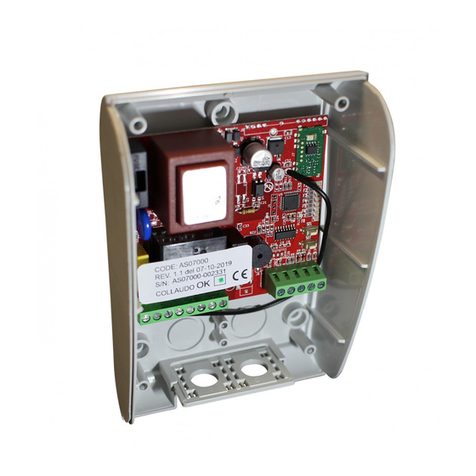
GiBiDi
GiBiDi SR2 Instructions for installation

Keyautomation
Keyautomation RX2H Instructions and warnings for installation and use

